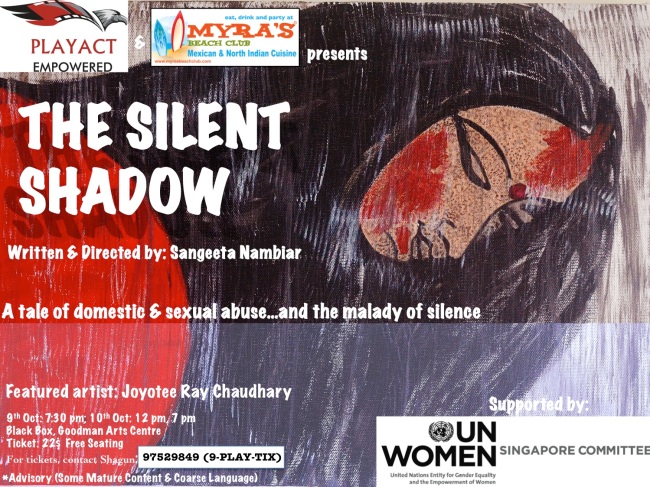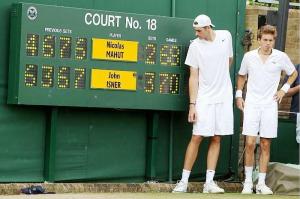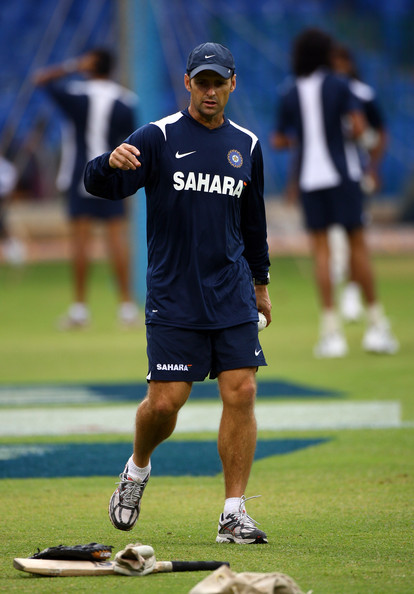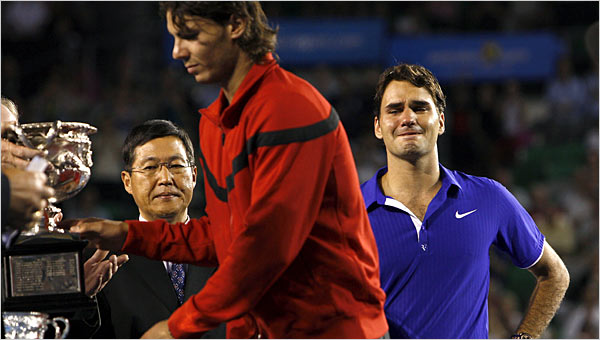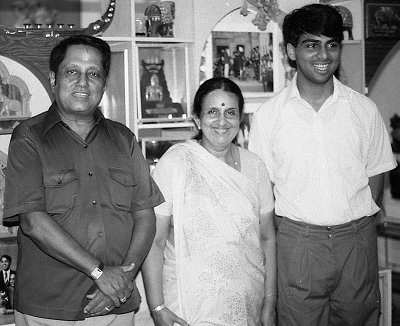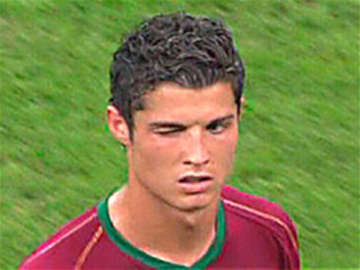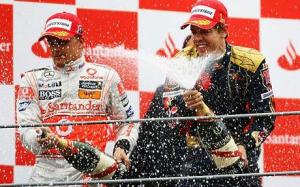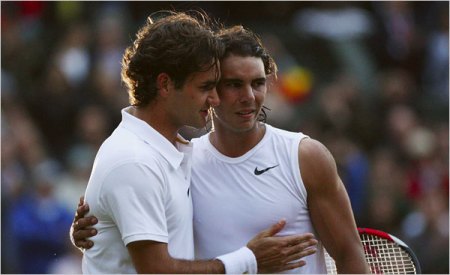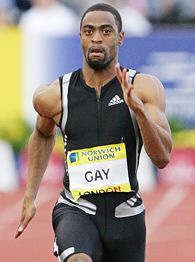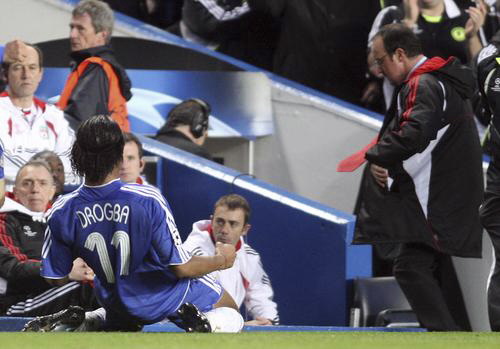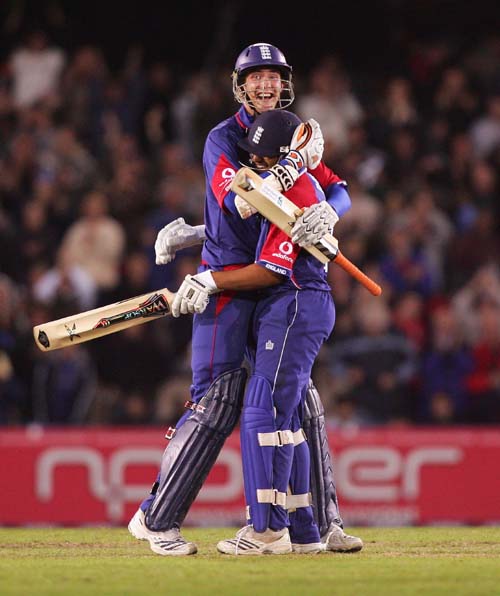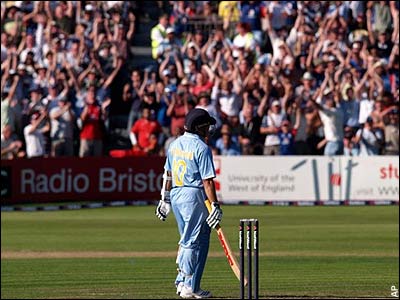Every once in a while, one comes across pieces of sports writing that defy time & remain with you. Strong stories of champions like the one below. Will try and bring some of those here in a random series.
This one is by S L Price and was first published in the Sports Illustrated issue of Sep 18, 1995. The article was called Ace of Hearts.
You never heard so many New Yorkers so quiet. Money and power and sweet connections brought them all here, 19,883 bodies stuffed into the seats of Louis Armstrong Stadium, and for the first time in 13 typically noisy days at the U.S. Open there is absolute stillness in the air. No one speaks for five seconds, six, and then it becomes impossible to sustain: A lone girl’s voice trills down to the tennis court:
“Steffi!” And Steffi Graf, lean and troubled and in a place no one, most of all herself, thought she would be, throws the ball high. Her serve tags the net cord and lands deep. A gasp ripples through the place, relief piled upon tension piled upon disbelief. It is just too intense, all of it — Monica Seles and her astonishing comeback, Graf and her astounding life, this Open that had, finally, presented the drama that tennis often promises and rarely delivers.
Double match point for Graf. She serves a second time, and Seles crushes the ball, simply steps in and drives it crosscourt with that lethal two-handed backhand — and in that moment the past and future merge, 2 1/2 years fade, and both the crowd and the women’s game roar back to life. Could it have been more perfect? Here it was, the dead center of the sport’s biggest Saturday ever, featuring six players with a combined 43 Grand Slam titles among them, six players who had all known the rarefied perch of No. 1. And yet, even with Pete Sampras and Jim Courier, and Andre Agassi and Boris Becker threatening to crush the women’s final between their big-name semifinals and their men’s-game arrogance, it was Graf and Seles who carried this Open, who held off the memories of the men who hurt them, who transformed a painful year into a future rich with promise.
It is match point again, and Graf serves, and so quickly it is over: Seles dumps a forehand low, making it 7-6, 0-6, 6-4 for Graf, and Seles rushes the net, waiting there with open arms. The two women, connected for so long by the blade of a lunatic’s knife, hug and then kiss each other’s cheeks. It is just short of unreal. For until this moment, the guilt of this had weighed on Graf: Gunther Parche stabbed Seles in Hamburg in April 1993 because he was a Graf fan. To meet Seles in the final — to know that she had blasted through the first 11 matches of her comeback without losing even a set — was pure relief. “Absolutely,” Graf says. “And it’s even more important to see her play that well and obviously enjoy herself and be…so at peace with herself. It’s so great to see that.”
Yes, it was in one sense, as Stefan Edberg put it, a “Seles Open.” And, with mighty Monica back and Sampras blasting Agassi away 6-4, 6-3, 4-6, 7-5 in the men’s final, it was also the Circus Maximus for one 800-pound gorilla of a sneaker company, whose poster children and slogans were ubiquitous. “It’s Nike’s world; we’re just living in it,” says Davis Cup captain Tom Gullikson, who like Seles, Sampras and Agassi is a Nike Guy. But it was the Adidas-sponsored Graf’s unexpected endurance that made this Open a precious thing. Graf has now won 18 major titles, an Olympic gold medal and the sport’s last Grand Slam. None of that meant more to her than last Saturday. “This is the biggest win I have ever achieved,” Graf says. “There is nothing that even comes close to this one.”
Why? Because even as Steffi wept and smiled oncourt, even as the flashbulbs flickered over her face and her trophy, her father — and manager — Peter sat in a jail cell in Mannheim, suspected of failing to pay German income taxes on a reported $1.5 million of his daughter’s earnings — a figure that could rise to $7 million. According to the German news magazine Der Spiegel, Peter’s arrest in August was the result of evidence in a suit brought against Peter by a tournament in Essen, Germany, run by manager-promoter Ion Tiriac. Peter, long known for his cash-only demands for Steffi’s appearances, has not been allowed to speak to his daughter since his incarceration. She has not been implicated, but German authorities presumably do not want the two to coordinate their stories. At the time of Peter’s arrest, Steffi was in the U.S. The German press went into a frenzy, staking out her apartment in New York, following her with a shopping cart as she picked up groceries in Boca Raton, Fla. She decided to stay in the U.S. and play the Open, and before it began, she sent Peter — the man who had drilled her into a championship talent, and the man, too, who had mortified her with a much-publicized dalliance with a model during Wimbledon in 1990 — a copy of the drawsheet. Last Thursday, two days after she had avenged her one loss of the year, to Amanda Coetzer, with a three-set win, Steffi sat near her mother, Heidi, and listened while her parents talked. She wasn’t allowed to say a word. “Ahh,” Steffi said later, “but I did hear him.” Her parents talked on the speakerphone. Steffi, silent, listened to her father’s voice crackle across the ocean.Throughout her Open, through her wins over Nathalie Tauziat and rising star Chanda Rubin and surprising Amy Frazier and a resurgent Gabriela Sabatini, Graf battled the chronic bone spur in her back, and a new bone spur that had sprouted in her left foot. Worse, she is the 26-year-old hub of a $125 million empire, which puts her at the center of this case involving her father. So even as Seles coasted through her first six Open matches without losing a set, and a collision between the two loomed closer with each passing match, Graf kept getting bombarded with news and gossip and worries about the case. “Some people now think they can take advantage of the situation and put pressure on you about different things,” Graf says.
Steffi plans to return to Germany soon — where she may face interrogation — to rein in the operation Peter let run afoul of the law. She says she has no regrets about leaving her money matters to her father; how else could she concentrate on tennis? “But I do have to look after more things now,” she says. Take a little more control? “A lot more control,” she says. “And basically I don’t know how.”
After her first six wins at the Open, Graf spoke of how shocked she was by her performance. Yes, she had won the 1995 French Open with little preparation and Wimbledon with her back giving her fits, but she fully believed her concentration would buckle under the strain in New York. Yet, in the U.S. Open’s oddest twist of all, it was Graf — not the iron-willed Seles — who proved mentally stronger. Serving at set point in the first-set tiebreak, Seles fired what she thought was an ace and began running toward her chair when the ball was called wide. Seles couldn’t believe the call — replays seemed to show it was wide — and she could not get over it. Graf blasted a forehand to win the point, and then Seles looped two forehands long. “Two-and-a-half years ago, if I have that call, I would say, ‘O.K., Monica, it’s gone,'” Seles said after the match. “This year, it was bugging me through the whole match. That’s what I have to get back.”
When Graf suddenly realized she could beat Seles — and win her third Grand Slam of the year — she was nearly frozen by nervousness. She wasted the second set 0-6, and the momentum appeared to belong to Seles. Graf herself figured it was time to lose. But as suddenly as it had dissolved, Graf’s serve took shape again, and Seles crumbled. Graf broke Seles in the fourth game of the third set, and that was enough. The question mark that hung over all six Grand Slam events Graf had won in Seles’s absence was gone; Graf served out to win one of the great women’s matches ever.
Off the court, however, life promises to be more difficult. “I have to think I will be tough enough,” Graf says of the months ahead. “I know at some stage I’ll be able to deal with everything, to look everyone in the face…and we’ll just move on.”
But not yet. For just as Graf was winding up her postmatch press conference, just as she was about to finish off two weeks of remarkable composure, one face in the packed room asked whether she would be able to see her father when she went home. “No,” Graf said. She said she would talk to her lawyers. She was very calm. Someone asked if she would be able to talk to her father about her time in Flushing Meadow, about being stronger than she ever thought possible. “I don’t think so,” Graf said. “Doesn’t seem like it.”
Then, without warning, Graf crashed. Her face reddened, her hand flew to her eyes and she spun out of her chair. She ran out of the room and ducked into the only refuge available — a cinder-block bathroom where, amid a sink, two toilets, a mirror and four echoing walls, the 1995 U.S. Open champion took her father, her fear and her strangely cursed talent and tried to be alone.
For Pete Sampras this year has had its tears, too. In the quarterfinal match at the 1995 Australian Open, Sampras, sure that his coach Tim Gullikson would not live six more months, broke down sobbing on court. He won the match but, at 23, faced a year unlike any he had known. Gullikson, who had collapsed during the tournament and learned he had cancer, flew home. Sampras lost in the final to Agassi and found that people suddenly treated him differently. He couldn’t believe what they were saying. “What pissed me off was everyone thinking, He’s finally human. It took me crying on a tennis court for people to understand that I do give a crap and I do have a heart and I want to win,” Sampras says. “I’m a human being. It’s always been there.”
Now, eight months later, Sampras is sitting on a training table icing his right knee. He has just waxed Byron Black in straight sets. He feels good. A man points a video camera at him, the light is on; this will be a birthday greeting for Tim, who is very much alive. The next day, Nike chairman Phil Knight will fly Tom Gullikson to Chicago to surprise his twin brother. Sampras won’t be going. He has to dismantle Courier and Agassi en route to his seventh Grand Slam title.
“Timmy!” Sampras says to the camera. “Pistol here, just coming off the court — kicked a little ass. Wishing you a happy 44th birthday. Just hanging here with the boys, we’re all thinking about you and praying for you. We’d love to get you back on the tour, but…uh, enjoy your birthday. I don’t know when you’re going to see this, but all the boys are going to be checking you out. We’re all thinking about you. I hope I can win my third Open for you. See ya, Timmy. Happy Birthday.”
Three days later, Sampras, who usually sleeps until 10 a.m., woke up at 7:30. It’s today. This is it. This is the final. “To be part of walking on that court, it’s a great feeling — it really is — to walk out with him,” Sampras says. “It’s different. Andre’s game … I have a lot of respect for it. He stands on the baseline and looks at you and says, I have no respect for your serve. He doesn’t back up at all.”
Just as he had the night before, Sampras phoned Gullikson in Wheaton, Ill. He talked with his traveling coach, Paul Annacone. He couldn’t wait; he knew what was coming. Everyone hoped for a classic, but it turned out to be one-sided: For three of four sets, Sampras simply outclassed Agassi, made the world’s No. 1 player seem solvable and weak. For the tournament he served up 142 aces and at times seemed to be competing against no one but himself. “The game of the future,” Agassi calls it, and meanwhile, frustration gathers below: Becker and Agassi bickered over “respect,” and Courier went toe-to-toe with Michael Chang and his brother, Carl, in a 20-minute locker room argument after Courier commented on Chang’s “gamesmanship” in their quarterfinal. It all came off like so much hissing from the snake pit. Nobody likes the prospect of spending the next five years attacking a castle that can’t be taken.
The only man who seems capable of mounting an assault is Agassi, and one incredible point in the final showed why. With Agassi serving at 5-4 in the first set — and Sampras trying to convert his second break-point opportunity — the two engaged in a breathtaking, net-cord-kissing, 22-stroke rally that for sheer power and athleticism surpassed anything seen in men’s tennis for a very long time. That Sampras prevailed on a backhand, crosscourt winner was irrelevant. As he threw up his hands and tried to catch his breath, as the crowd rose for its only spontaneous standing ovation of the day, it was as if a lifetime’s competition (Sampras leads their series 9-8) had been boiled to its essence. “The best point I ever played,” Sampras says. Says Agassi, “That point really sucked.”
In Wheaton, the Gullikson living room shook with shouting. “I’ve never played a point like that,” Tim says. “I’ve never seen a rally like that.”
Sampras has said often that the way to help Gullikson get well is to win. Still, watching it at home, Tim was surprised when the camera cut to Sampras as he sat in his chair just after Sunday’s final point, and he looked at it out of the corner of his eye and said, “That’s for you, Timmy.” Twenty minutes later, the phone rang in Wheaton.
“Did you hear that?” Sampras asked.
“Oh, yeah,” Tim said. “We heard it.”
It is late, 5:05 p.m. on Friday, and Monica Seles has long since disposed of Conchita Martinez in the semis. She is being led to a room under the stands when she notices light coming from up the tunnel; suddenly she bolts from the group, out to the stadium court. Storm clouds scud overhead, and the place is empty and huge, and the seats escalate to the sky. She stands for 10 seconds, staring. “I just wanted to see it with the lights,” she says softly. “It’s beautiful.”
This, Seles says later, was her mission for the Open. She wanted to gather every smell and sound and feeling into a package and take it with her. So there was a trip to Barney’s to buy hats and the presenting of an MTV award and the night she painted her fingernails five different colors and standing on the sidelines at a Monday Night Football game. There was the moment just after her first match back at a Grand Slam event ended and she went over to a crowd of kids in the stands and turned her back to a crowd of strangers and flung a towel high over her head.
“I just wanted to do that, to feel that,” Seles says. “I wanted to take some memories back. Like in 10 years from now, I can say, This is what I felt. I don’t have that from ’91 or ’92.”
No, when she won the Open those years, Seles went away full of tennis and nothing else. She spoke often of this year’s Open as something “fun” and giggled through every press conference. But it is easy to mistake Seles’s laughter for joy, rather than the nervous tic that it is, and there were moments, even in New York, even during matches, where memories of the stabbing flashed through her mind. “A few times they come,” Seles says. “But I know I have the next point, and I know if I miss that next point, I get mad at myself. I tell myself, O.K., O.K., just forget it. The tennis helps.”
But only when you’re ready for it. Later that Friday night, Seles’s closest friend from her old days on the tour, Jennifer Capriati, ends a long absence from tennis by appearing at a dinner for the International Tennis Hall of Fame. She looks thinner, happier than in the aftermath of that infamous night in May 1994 when she was arrested for possession of marijuana, and doesn’t blanch when Chris Evert, onstage, says into a microphone, “Jennifer…I just want you to know. We miss you, and we want to see you back, babe. It’s great for the game.” Applause fills the room. A spotlight falls on Capriati.
Seles and Capriati have tried reaching each other but haven’t connected. Seles thinks she could help ease Capriati’s return. But “Jennifer has to feel that for her own self,” Seles says. “Otherwise she’s coming back for somebody else, and that’s doing the same thing she tried to escape from.”
Strange, in this game, how one misery tracks another. For just as Graf steeled herself to composure in that bathroom — and the pack of photographers set up outside — a small, oblivious parade passed by just outside. First came Monica, a bouquet of flowers in hand, chattering, then her father, Karolj, and mother, Esther. They were leaving the U.S. Open now, all giggling at once. It was impossible, at that instant, to read the scene and know anything. Who was the loser? Who won?

